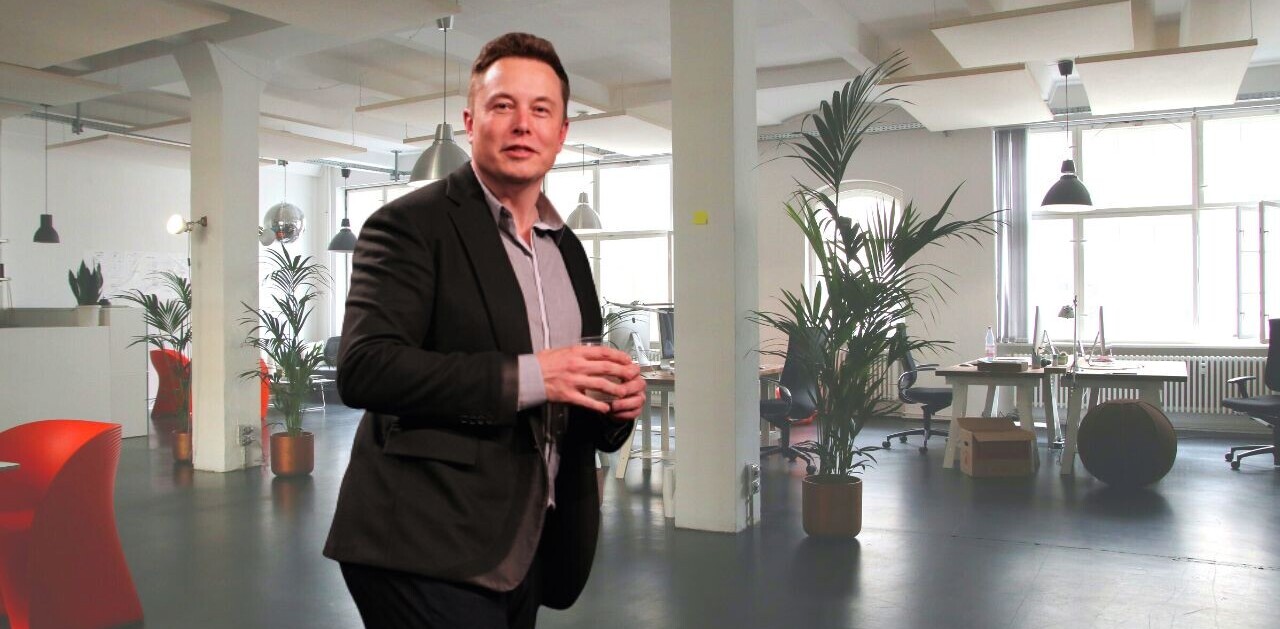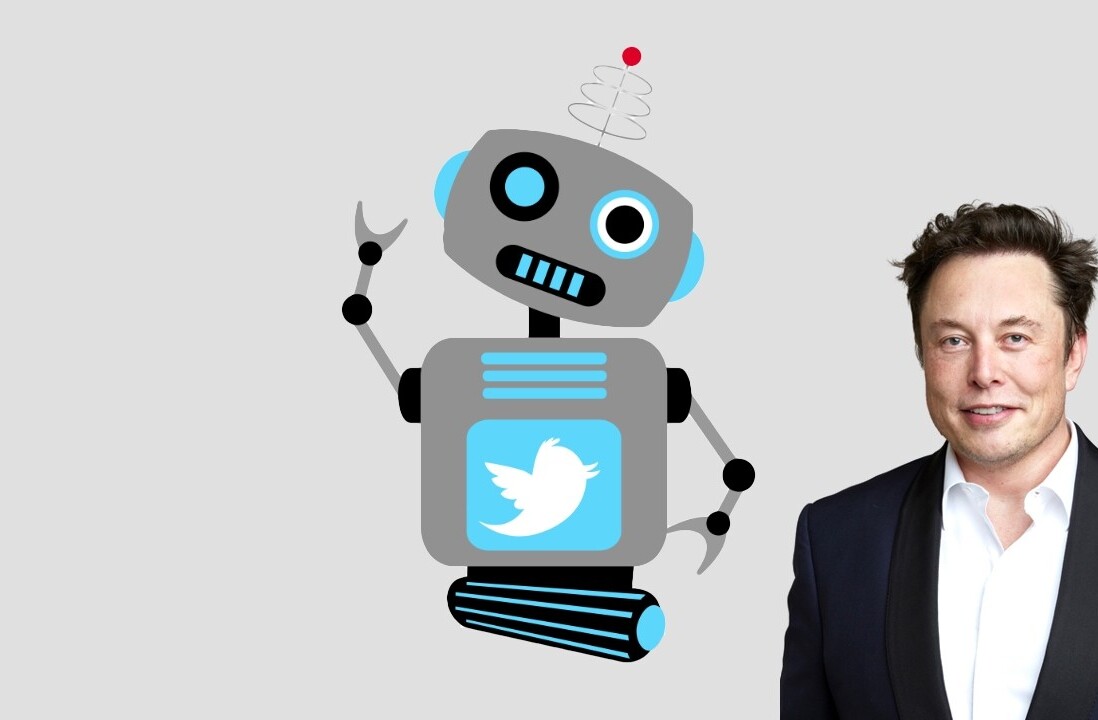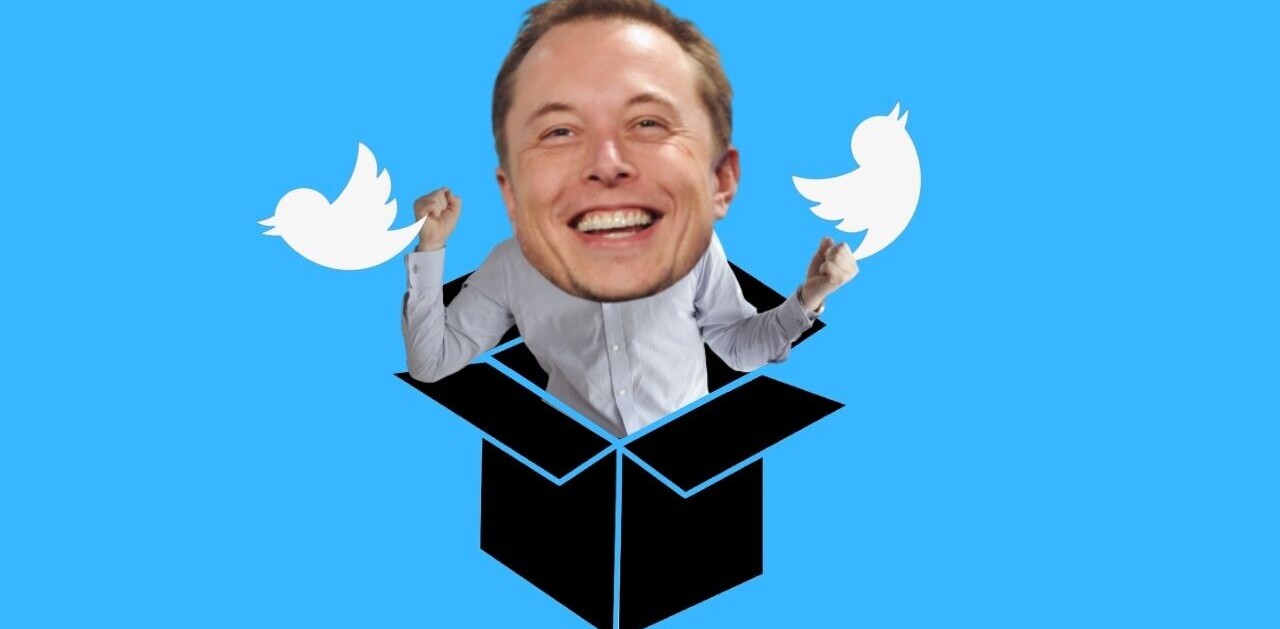
This week, Twitter turns 10. Over the next few days we’ll be exploring how far the microblogging service has come, the challenges it faces going forward and some of its key moments along the way.
One of the most palpable sore spots in the dynamic between San Francisco and the tech industry that calls it home is the 225-acre patch in the heart of the city fittingly called the Tenderloin.
It has been the site of some of the biggest and most successful tech companies – but is also the most concentrated display of the city’s chronic homeless program.
On the same streets where successful CEOs and product managers walk to their open-plan offices, there is a visible amount of drug use, public defecation and sleeping bodies blocking sidewalks.
 As a result, two viewpoints emerge: one where the privileged tech class feels they have earned the right to avoid seeing others suffer, and another where citizens see that same tech class as the real problem.
As a result, two viewpoints emerge: one where the privileged tech class feels they have earned the right to avoid seeing others suffer, and another where citizens see that same tech class as the real problem.
At the center of this battle is Twitter. In the three years since the social media company has occupied a spot on Market street, it has become an emblem of the tech world invading San Francisco’s space.
This is in no small part due to the tax break that allowed businesses to be taxed at lower rates for holding its headquarters in the Tenderloin (otherwise referred to in political documentation as the “Mid-Market Area”). The tax break, which started in 2013, is more commonly known around the city as the ‘Twitter Tax Break.’
As it turns out, having your name attached to such a plan hasn’t done well to quell mounting pressure that the tech sector is displacing more people than ever before while hurting civic infrastructure.
Especially as, according to the San Francisco Chronicle, the city has actually lost more than $34 million in the three years since the tax break has been available.
However, despite its namesake association with everything bad the city has done, local non-profits and charities that have worked with the company say that it has become a model partner for business philanthropy and civic involvement – unlike most startups in the area.
So is Twitter the Tenderloin’s problem, or patron? And, on its 10th anniversary, is there more it can do to serve the needs of the people?
Quantifying and qualifying SF’s homeless problem
Every two years at the end of January, cities in America conduct a major survey to quantify the homeless problem in their areas. San Francisco participated, tabulating the homeless population across the city’s 47 square miles over a span of 10 days in 2015.
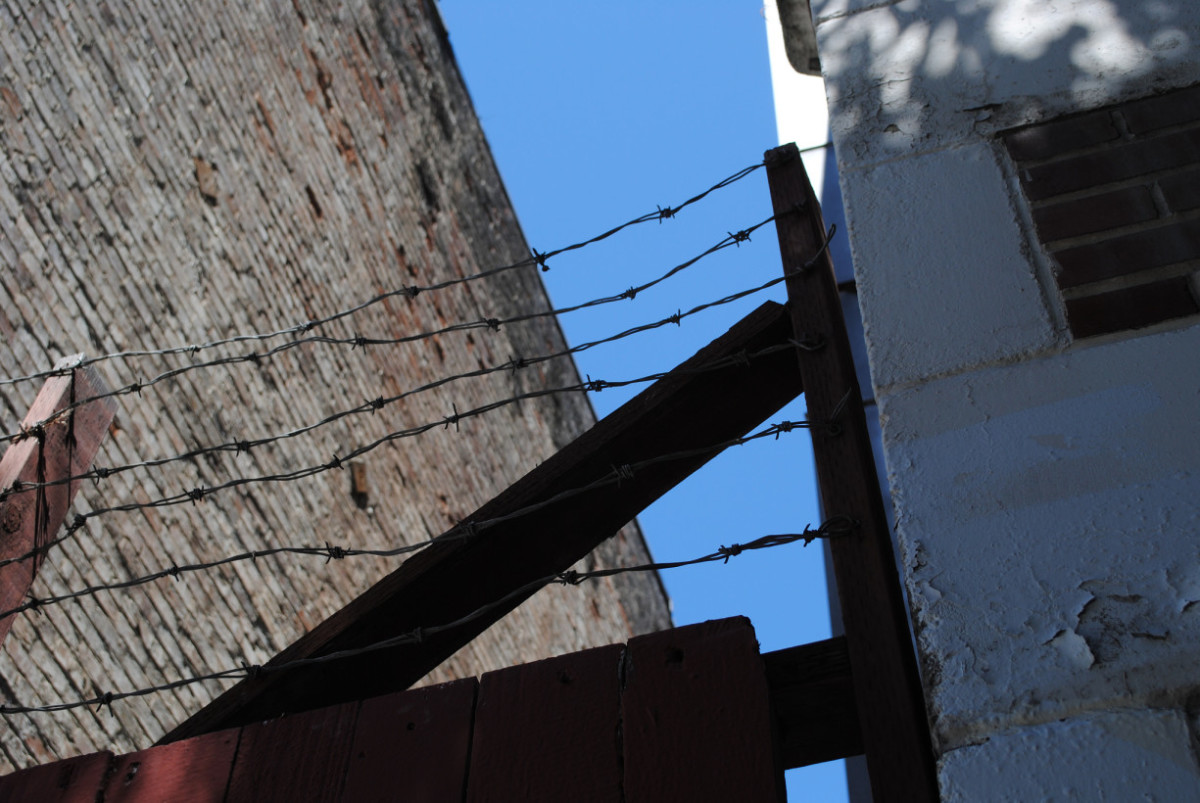
At that time, the total number of homeless individuals in the city was 6,686, 231 more people than in 2011. Additionally, the number of homeless people classified as unsheltered – as in, living on the streets – jumped to 3,505, 500 more than in 2011.
In total, 58 percent of all of the city’s homeless, including youth, were without shelter at the time of the count, meaning that it’s quite likely that percentage is without shelter at any given time.
Although there were signs of homeless spread throughout the city, the highest concentration was found in District 6, which comprises the Tenderloin and other nearby downtown neighborhoods.
Some 4,191 homeless people were found within those confines, more than three times as big as the next highest district population.
District 6 is also considered a big business sector: at least five days per week, thousands of workers who find themselves in the city’s bustling tech industry also find themselves in the nexus of the homeless crisis in the city.
The tension of everyday interactions between the displaced and, arguably, the displacers is seen in the tech sector’s hostile reactions to the homeless presence – which of course happens on the Web.
Most recently, an entrepreneur by the name of Justin Keller wrote an open letter to Mayor Ed Lee that has now become the prototypical example of the tone-deaf attitude many in the city address its homeless issue:
The wealthy working people have earned their right to live in the city. They went out, got an education, work hard, and earned it. I shouldn’t have to worry about being accosted. I shouldn’t have to see the pain, struggle, and despair of homeless people to and from my way to work every day. I want my parents when they come visit to have a great experience, and enjoy this special place.
The kernel of truth lying within Keller’s words, of course, is the amount of people who simply cannot afford to live in the city anymore.
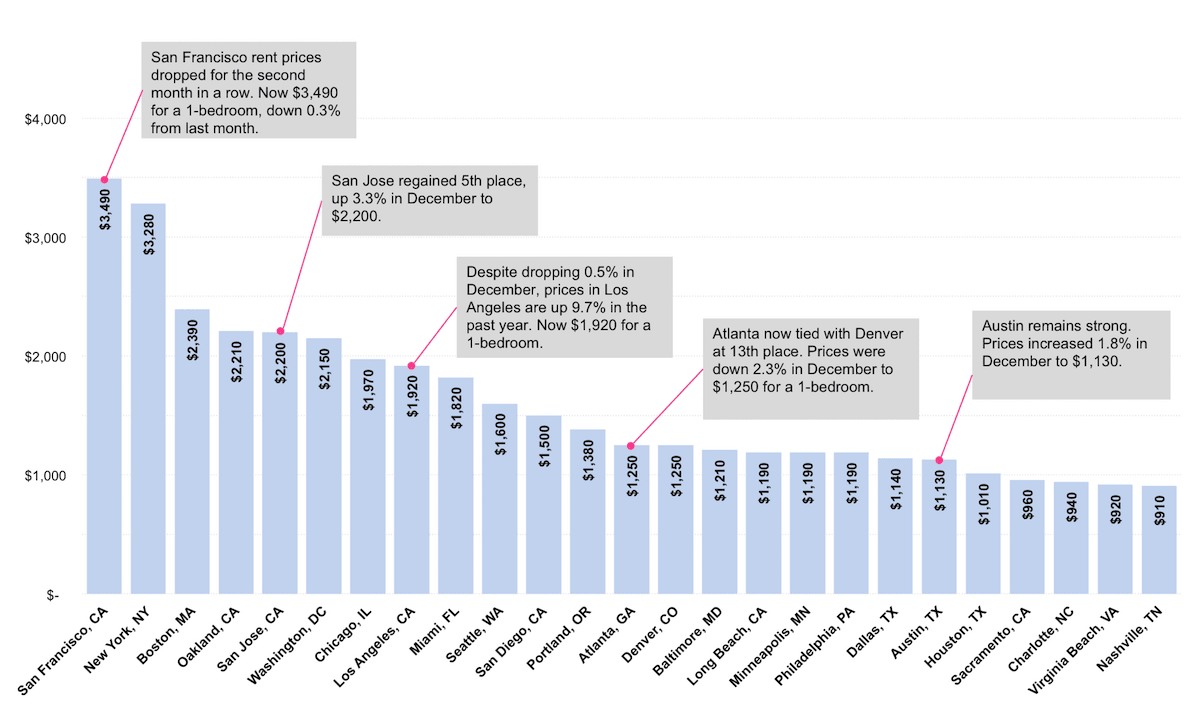
According to a January report from real estate site Zumper, San Francisco now claims the top spot for average price of a one-bedroom apartment at $3,490 per month, with the minor consolation that rent seems to be dropping ever so slightly.
Meanwhile, despite the city’s bold efforts to create below-market-rate housing in meaningful proportions, landlords are evicting tenants and raising rates almost faster than the city can create new reasonably priced units.
Although San Francisco’s problem with the homeless has been storied, the recent influx of residents driven by the tech boom has already put a squeeze on the already tenuous situation that existed.
Yet, even with these signs, pro-business legislature like the ‘Twitter Tax Break’ has gone into effect. Deals for the Super Bowl led police to break up homeless encampments in order to make way for a more appealing NFL Zone.
Violence against homeless people has also increased, most recently characterized by the brutal tackling of a homeless man in a BART station.
In light of all of these pressures, the result is simple: as tech thrives and brings a wave of gentrification to the city, San Francisco’s most at-risk citizens are further marginalized. The tech people blame the homeless, the non-tech people blame the tech people, and the homeless end up with even less.
Twitter’s civic involvement
Twitter has long discussed its philanthropy programs on its corporate blog, particularly in its employee-focused #FridayForGood campaign, where the company’s global offices participate in volunteer work once per year.
But the company also works closely with a handful of non-profits that are specifically focused on serving the needs of at-risk and homeless people in the city.
 The crown jewel of its efforts, which spread across several different initiatives, is the Twitter NeighborNest: a $3 million, 4,000 square-foot technology complex designed to offer computer skills and lab hours for low-income and homeless children and adults.
The crown jewel of its efforts, which spread across several different initiatives, is the Twitter NeighborNest: a $3 million, 4,000 square-foot technology complex designed to offer computer skills and lab hours for low-income and homeless children and adults.
Opened last summer, the NeighborNest sits across the street from Twitter’s headquarters and serves the clients of several of its partners, including the 5,000 at-risk or homeless adults and children that work with Compass Family Services.
“Everyone needs technology just to kind of function in a community in this day and age, and that is absolutely the same for families who are homeless or at risk,” Erica Kisch, executive director at Compass, told TNW.
Compass works with a subset of “invisible” homeless – 50 percent of its clientele are below the age of 18 and 73 percent are women, a vulnerable population that is separate from the chronic homeless most commonly visible on the city streets.
Kisch said that although it would likely be hard to identify homeless families, they still remain in precarious situations due to the city’s displacement problems and the lack of ready shelter. “These families are waiting 7 or 8 months for a shelter stay that’s only 6-months long,” she explained.
In its work with Compass, Twitter has donated about $110,000 directly to Compass for its work in the city and has a program to bring employees to volunteer with Compass families.
Additionally, the company helped install WiFi to both the Compass Clara House and Compass Family Shelter. The non-profit also uses Twitter’s facilities and catering to provide a yearly Christmas party, which distributes books donated through an employee drive to kids for the holidays.
But Kisch made it clear that the NeighborNest has affected the most change in its clientele.
“Kids need computers and computer skills for their education, and it’s the same with adults: they’re either trying to get into the workforce or get back into the workforce, and without basic computer skills it’s hard to secure a job and even harder to find a job.”
The @NeighborNest is officially open! pic.twitter.com/w1fG67vocg
— Compass Family (@compasssf) May 21, 2015
But Twitter doesn’t only offer technology services to its partner non-profits – it has also shown a willingness to cater to their needs and desires to help make their overall mission stronger.
Larkin Street Youth Services focuses on another subset of invisible homeless – youth between the ages of 12 and 24 without families – and provides them with temporary shelter, shower services, mental and physical health services, plus job and life skills to be independent and off the streets.
Kathleen Stavis, communications manager at Larkin Street, told TNW that homeless youth often don’t feel safe in the Tenderloin because of the heavy drug use of the chronic homelessness in the area.
Tensions are rising in the Haight Ashbury, where homeless youth are often found – and they will go to nearly any measure to stay off the streets at night.
“A lot of youth will do anything they possibly can, including trading sex, for a place to stay,” Stavis said.
In the three years Larkin Street has been working with Twitter, Stavis says the company has been particularly helpful in providing funding, volunteering and resources to help with the non-profit’s mission.
Employees of the company volunteer regularly, from painting Larkin Street buildings to offering skill-based volunteering and educational programs.
The company has also provided money to the non-profit, giving $125,000 through the end of 2015.
“There are funders out there that try to put their own agenda forth with their funding,” she explained. “I think what they have been able to do for us is expand the type of folks that are interested in what we do.”
Stavis also says that Twitter has been happy to provide its own facilities and resources to help Larkin Street do some of its most important work.
Like Compass, Stavis said that Larkin Street has had access to Twitter facilities for important events. The company has also helped Larkin Street in larger donation appeals, offering a matching grant of $50,000 in fundraising efforts and allowing the company to use their name in advertising.
The result was more money for Larkin Street – Stavis said they raised three times more money than they had in previous years.
“There’s certainly tech companies that try to fit us into what we have to offer,” Stavis said. “Twitter understands that it has to fit what we need.”
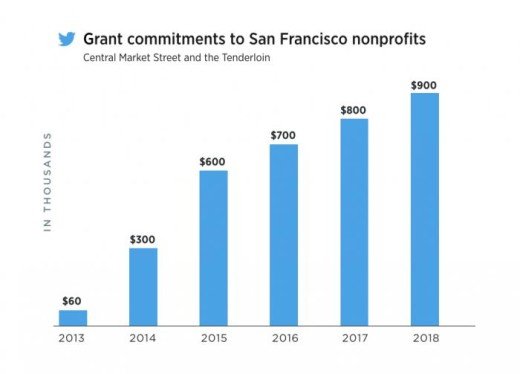
This philosophy will likely grow significantly in the coming years. According to a blog in 2015, the company has committed to donating $3 million across non-profit and charity initiatives through 2018 – and that doesn’t quantify the impact of Twitter’s rallying of its own employees to get out and make a difference.
Both Kisch and Stavis mentioned that employees at Twitter’s headquarters have become regular volunteers with their work, and have helped provide more comprehensive services for their clients.
“We designed it from the very beginning to the very end together, but working with a for-profit company with resources, it was so fast and so easy,” Kisch said. “These companies have resources we do not have.’
Is there a future in corporate/civic philanthropy?
While it is the case that the non-profits I talked to expressed specific preference for the way Twitter is conducting its outreach, there’s more to the story beyond the company – and beyond the Tenderloin.
To what extent should companies adopt philanthropy, and how should it be conducted?
It’s a reasonable assessment to say Twitter does more than most, especially for its immediate surroundings. For example, Apple has developed a historically notorious reputation for ignoring philanthropic gestures until last year, when it launched a multi-year program to provide finances and resources to non-profits focused on bringing minorities and veterans into tech.
The trend of pouring money into STEM education initiatives isn’t new – companies like Intel, as well as VC firms and accelerators like TechStars, are keen on hopping on that trend. But one could argue there’s a means to an end in the form of a stronger workforce to feed into these companies over time.
There are also companies that believe in letting employees decide where to put money, similar to the case of Salesforce.
CEO Marc Benioff has been vocal about incorporating giving into his corporate structure – added incentive comes from Benioff’s name being on a hospital in the area.
But, the company also matches employee donations of up to $5,000 per fiscal year to a number of charitable organizations. In this case, as long as employees have initiative, money can be easily and efficiently spread around to a number of causes.
Day 1: ✔️! #DigitalLiteracy workshop series kicks off w/@CTNBayArea, @compasssf, @HamFamCtrSF & our volunteers. ?? pic.twitter.com/e2rxBitGTt
— NeighborNest (@NeighborNest) March 22, 2016
Twitter falls somewhere in the middle, offering organization-led philanthropy that steps outside the box to help its immediate community – one with which it has a fractured relationship.
It’s difficult to determine whether the time and money Twitter gives to charities and non-profits is an equal counterweight to the incentives it receives to be in the area.
It’s equally unclear whether Twitter could objectively do more in stepping outside of the box to provide necessary resources or extra financial support.
But the company’s effort is not zero, which is saying something. When companies, like Uber for example, claim philanthropy through its customer’s donations or ‘informal’ methods, it feels more like veneer than genuine good.
Additionally, plenty of companies simply don’t give, period. After all, where does it say in a capitalist structure that companies must care about communities?
Through this lens, Twitter could be a model for change. If many companies try to be a good neighbor to their city (or cities), it could reduce the overall tension.
The important thing, in this case, is to try.
“When we make the weakest, most vulnerable members of our communities stronger, it’s better for everyone,” Kisch said. “We need everyone to help and step up.”
Get the TNW newsletter
Get the most important tech news in your inbox each week.

